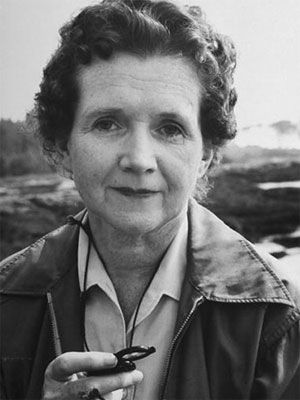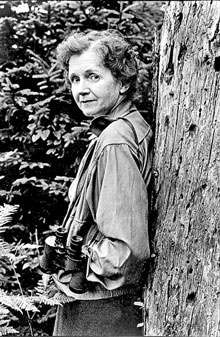
On PCW presented Rachel with an honorary Doctor of Literature. Rachel graduated Magna Cum Laude with a degree in Science in 1929 and a scholarship to study for a Masters in Zoology at Johns Hopkins University. In an essay written during her first year at PCW, she remarked, "I believe I will have time to think and to come to a fuller realization of my self, and that the training I receive here will help me to play my part on the stage of life." Due in part to biology professor Mary Skinker, she decided to switch her major from English to Science during the middle of her junior year. Rachel began school in 1926 as an English major. Her career as a writer began early when St Nicholas Magazine published her story "A Battle in the Clouds" in September 1918.Īfter graduating from Parnassus High School, Rachel received a partial scholarship to attend the Pennsylvania College for Women (now Chatham College). Rachel, the youngest of three children, spent her childhood on 65 acres of woods and farm land about 14 miles outside of Pittsburgh. Sign up here to receive the RCC E-News and other RCC newsletters, information and alerts.Rachel Carson, author of Silent Spring, one of the most influential environmental books published was born in Springdale, Pennsylvania on May 27, 1907. The Rachel Carson Council depends on tax-deductible gifts from concerned individuals like you. Kaylee Rodriguez is a rising senior at Duke University pursuing a major in Public Policy, a minor in Environmental Science and Policy, and a certificate in Policy, Journalism, and Media Studies. Kaylee Rodriguez, RCC Stanback Presidential Fellow I bend down, in wonder at the kaleidoscope of color that opens up to me. I breathe deeply, smile, and head outside to my new city. I smell the fresh aroma of freshly clipped pink peonies ( Paeonia lactiflora) from my family’s backyard. The sweet and delicate scent of peonies fills the dining room. Their calls blend into a symphony of rustling wind, whirring cars, and bouncing basketballs. I hear the sounds of birds chirping on a late spring afternoon. I feel the grass and small twigs making small indentations on the soles of my feet as I run through grass to catch a football. The blends of light pink and yellow should have been a warning that they were not ripe yet. My lips pucker as I taste a sour cherry right off the tree. The colorful buds shine in contrast to the gray skies this week. And I encourage you to do the same!Īmid the buildings, row houses and gravel roads, small pops of color adorn the streets. I am connected to the flowering dogwoods and Potomac River, even though they are new to me.Įach week, I will capture and share the small moments that inspire wonder in me. “We are nature seeing nature” -Susan Griffin, EcofeministĪs I observe the world around me, I will remind myself that I too, am a product of the living environment. I am challenging myself to feel, to use all my senses I hope that you will join me. So, my goal for this summer in the nation’s capital is to be intentional about appreciating the glimpses of nature’s beauty throughout this city. But it is harder to imagine cultivating this same sensation in a heavily built environment.

I often feel this sense of wonder while hiking in the mountains or snorkeling through vibrant coral reefs. “ It is not half so important to know as to feel.”-Rachel Carson, Sense of Wonder Carson encouraged us to feel and be filled with wonder for the natural environment.

However, as I reflect on Rachel Carson’s call for us to tune into nature, I cannot help but feel that I miss an opportunity when I choose to tune out. There is nothing inherently wrong with this scenario. Instead of listening to what Rachel Carson called the morning chorus of bird song, I plug in my earphones and listen to Bad Bunny’s newest album. No time, no need, to look up at blooming trees or down at budding flowers, to pause, breathe, and see the sky. Yet, I am already realizing how quickly I can get sucked into the frantic morning rush, sending a text, or checking who is emerging from the White House. I grew up in one, so this feeling is not entirely new.

It is easy to get lost in the bustle and grandiosity of a city. But I am surrounded by a Capitol and cathedral domes, neo-classical government buildings, a Beaux Arts train station, and lines of Victorian rowhouses, rather than blades of grass, dirt tunnels, and nests that store bunches of ghost-white larvae. As a first-timer in D.C., I feel like a tiny ant, my antennae navigating a new environment.


 0 kommentar(er)
0 kommentar(er)
